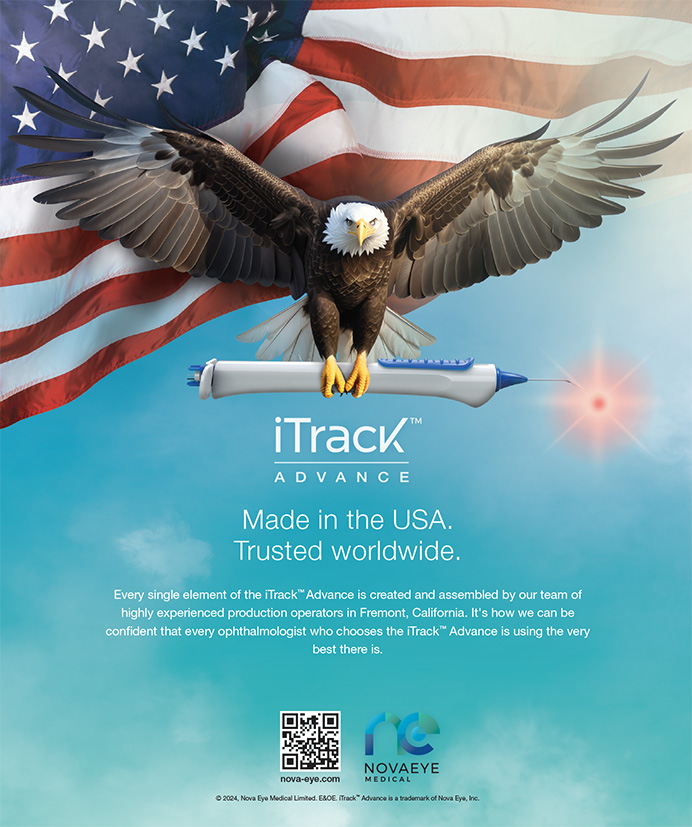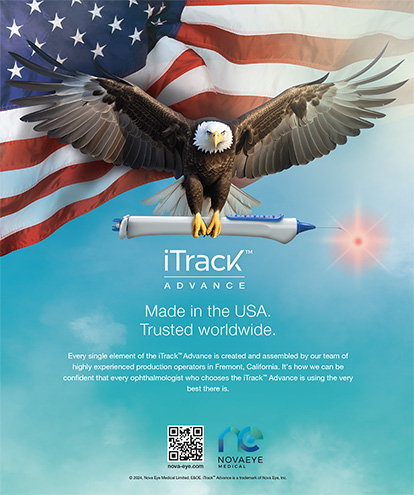The principles of preventing posterior capsule opacification (PCO) can be divided into two categories. First, the surgeon must strive to minimize the amount of retained/regenerated cells and cortex (Soemmering's ring formation) following cortical clean up. Second, if there are remaining cells, the surgeon must create a physical barrier by the edge of the intraocular lens (IOL) optic in order to block cell growth from the equator centrally over the visual axis.1
Copious hydrodissection may help to minimize the number of retained cells following cortical clean up by enhancing and facilitating cortex removal. This has been demonstrated by experimental pathologic studies in our laboratory.2 Following the same principle, the use of a J-cannula to irrigate the cortex remaining after phacoemulsification, particularly in the subincisional space, also helps to obtain a cleaner capsular bag.3 Analyses performed in our laboratory of human globes obtained postmortem and implanted with various types of IOLs have demonstrated that at least as of the mid-1990s, the overall efficiency of cortical clean up had not sufficiently improved to an extent that was able to achieve the desired effect.
CLINICAL STUDIES
Our analyses determined that an average eye in the mid-1990s had an appearance not unlike the average eye in the early 1980s. This is important because the potential for PCO is directly related to regrowth and ingrowth of cells from this source within Soemmering's ring. However, globes accessioned in our center from the late 1990s to the present share three general features: (1) a progressively larger number of eyes are implanted with modern foldable IOLs, (2) the lenses have capsular fixation, and (3) from a posterior or Miyake-Apple view, the capsular bags appear much cleaner than we observed in the 1980s and early 1990s.
SOEMMERING'S RING FORMATION
Figure 1 shows two pseudophakic human globes obtained postmortem and implanted with the same IOL design, and a significant Soemmering's ring formation. However, the square edge of the lens had efficiently prevented the retained/regenerated material from migrating to the central posterior capsule over the visual axis (Figure 1A). In Figure 1B, not only is there a significant Soemmering's ring formation, the capsulorhexis is also large and decentered. The anterior capsule is fused with the posterior capsule in almost two quadrants, which caused slight tilting of the IOL optic. At this site, peripheral PCO can be observed, but not central PCO.
It is interesting to note that the various features presented in Figure 1 can be well appreciated because of the Miyake-Apple posterior photographic technique. The iris usually hides the equatorial region of the capsular bag, thus a significant amount of cortical material may be left behind, shielded from the surgeon's view.
IOL-RELATED FACTORS
Implantation of modern, foldable IOLs requires the use of modern phacoemulsification techniques. Application of the three surgery-related factors in reducing PCO (hydrodissection-enhanced cortical clean up, endocapsular IOL fixation, and capsulorhexis edge on the IOL surface) identified by studies in our laboratory are responsible for the reduced PCO rates observed over the last few years. Two of the three IOL-related factors (maximal IOL optic/posterior capsule contact and barrier effect of the IOL optic) are features that have already been incorporated into different IOL designs. However, the “biocompatibility” of the IOL material, with respect to the adhesiveness between the IOL and the capsule, remains a controversial issue. Some investigators believe that the geometry of the IOL is the major IOL-related factor in preventing PCO.4
EXAMINING IOL MATERIALS
Differences between IOL materials are evident if one looks at the postoperative anterior capsule opacification. The square edge of the IOL does not have any influence on the pathogenesis of anterior capsule opacification, as remaining lens epithelial cells on the inner surface of the anterior capsule will have the potential to undergo fibrous metaplasia, and opacify the anterior capsule in contact with the IOL. Studies in our laboratory have highlighted the differences between three IOL materials in relation to this postoperative complication.5,6
CONCLUSION
In summary, studies in our laboratory have demonstrated that the quality of the surgery, with special regard to the cortical clean up, is very important in the reduction of PCO rates. A “perfect” IOL would not be effective in preventing excess cell proliferation within the capsular bag after imperfect surgery.
Suresh K. Pandey, MD, is Post-Doctoral Fellow at the Center for Research on Ocular Therapeutics and Biodevices, Storm Eye Institute, Department of Ophthalmology, Medical University of South Carolina, in Charleston, South Carolina. He does not hold a financial interest in any of the materials presented herein. Dr. Pandey may be reached at (843) 792-0777; pandeys@musc.edu
Andrea M. Izak, MD, is Post-Doctoral Fellow at the Center for Research on Ocular Therapeutics and Biodevices, Storm Eye Institute, Department of Ophthalmology, Medical University of South Carolina, in Charleston, South Carolina. She does not hold a financial interest in any of the materials presented herein. Dr. Izak may be reached at (843) 792-2737; izaka@musc.edu
David J. Apple, MD, is Professor of Ophthalmology and Pathology, Director of the Center for Research on Ocular Therapeutics and Biodevices at the Storm Eye Institute, Department of Ophthalmology, Medical University of South Carolina, in Charleston, South Carolina. He does not hold a financial interest in any of the materials presented herein. Dr. Apple may be reached at (843) 792-2760; appledj@musc.edu
1. Apple DJ, Peng Q, Visessook N, et al: Eradication of posterior capsule opacification. Documentation of a marked decrease in Nd:YAG laser posterior capsulotomy rates noted in an analysis of 5416 pseudophakic human eyes obtained postmortem Ophthalmology 108:505-518, 2001
2. Peng Q, Apple DJ, Visessook N, et al: Surgical prevention of posterior capsule opacification. Part II. Enhancement of cortical clean up by focusing on hydrodissection. J Cataract Refract Surg 26:188-197, 2000
3. Dewey SH: Cortical removal simplified by J-cannula irrigation. J Cataract Refract Surg 28:11-14, 2002
4. Nishi O, Nishi K: Preventing posterior capsule opacification by creating a discontinuous sharp bend in the capsule. J Cataract Refract Surg 25:521-526, 1999
5. Werner L, Pandey SK, Escobar-Gomez M, et al: Anterior capsule opacification: A histopathological study comparing different IOL styles. Ophthalmology 107:463-471, 2000
6. Werner L, Pandey SK, Apple DJ, et al: Anterior capsule opacification: Correlation of pathological findings with clinical sequelae. Ophthalmology 108:1675-1681, 2001


